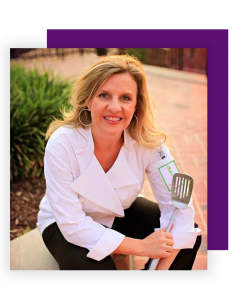Many of the wellness business owners I work with are surprised to find out that not posting new content to your website every month can dramatically decrease your SEO (Search Engine Optimization) efforts. This means you are less likely to show up in a Google search as a wellness provider in your area. If you are not showing up on the first page in Google, new patients/clients aren’t likely to find you. Learn here how to stop losing new business with this one thing!
If you are not updating your website monthly, you are missing out on lots of potential patients/clients.
What makes updating my website so important?
Google sends out what is known as a bot (or spider) to search for new content on websites regularly. The information scanned by these bots tells Google if your site is active and useful for patients/clients seeking services in your area. If you have made updates recently, with relevant, useful content, Google recognizes your efforts. If you are not making regular updates, Google assumes your site is not as active or important. It then sends the bots less often, which in turn, drops your SEO ranking. This drop makes your site more difficult to find by potential patients/clients.
So how do you make regular updates that are relevant and useful?
By creating or updating your blog. Taking the time to develop just 12 blog posts per year can make a big difference in your SEO results without a significant investment. Twelve posts may seem daunting, but conducting a quick brainstorm can get ideas spinning in no time.
How do I brainstorm blog topics?
Start by creating a list of the following potential blog topics:
- What questions do I find myself answering over and over?
- What services do I offer, what problem do they solve and how do people feel after that service or treatment?
- What supplements or products do I recommend to most patients/clients? Or what products or services do they ask about?
- What do I tell patients/clients that makes them say, “Wow!”?
- What conditions or complaints do I solve well, and what do I want people to know before they choose to work with me?
- Who is my ideal patient/client, and what valuable content could I offer that would attract them?
Ok, I have my list of topics, now what?
First, select the top 12 ideas your current (or ideal) patients/clients would find most useful. Once you have your list narrowed down, rank them in order of importance. Then, start writing! Even if you are not a great writer, get your thoughts related to that topic written down. If you get that much accomplished, it is easy to hand off to a ghostwriter (someone who writes the actual blog for you) or staff member. If you get stuck, just reach out. We offer copywriting services and can help create content for you or refine what you create so that it communicates your message in the most clear, efficient way.
How should I structure my blog post?
- Start by considering your “keyword.” A keyword is a word or short phrase that tells Google, “Okay, this blog is about headaches. If a person searches ‘headaches,’ this blog should come up.” Include your keyword(s) often in the text of the blog.
- Create a simple, clear title that makes your ideal client want to learn more. Example: 5 Ways to Knock Your Headache Out Fast. Just be sure your keyword is in your title.
- Keep it simple. While your potential clients may be incredibly intelligent, they are bombarded with information every day. By making your post conversational and straightforward, you increase the likelihood that your clients will keep reading.
- Read it out loud. If your post is easily read out loud, it will flow better in the reader’s mind.
- Follow a story format. Our brains love stories! When we write our blogs in the form of a story, it keeps our readers engaged. Here is a simple story format to consider:
- Start with a problem: Using our headache example, you might start with something like this: “You know the feeling. Your day is going along well and a pounding headache suddenly disrupts it. Your eyes ache, you can’t focus…,” you get the drift. Or, start with a patient example: “Mary came into our office after years of debilitating headaches that left her miserable, unproductive and crabby.”
- Present the solution: This can be as simple as: “Here are the five things you can do to knock out your headache fast (of course one of those is to book an appointment to get to the root cause).” Or you could talk about the treatment Mary received and how it worked.
- Describe the outcome or benefit of taking action: Explain what life will look like on the other side: “By taking these five simple steps, you will be headache-free so you can enjoy your family, work pain-free…” Or, “Now Mary enjoys a headache-free life with her three grandchildren…”
- Tell the reader exactly what to do next. This is a call to action (CTA). Many business owners forget to ask potential patients/clients to take action. Be sure to include a clear CTA at the end of every blog post: “Call our office today to get to the root cause of your headaches.”
6. Finally, find a great image for your blog post. Blogs with pictures are MUCH more likely to be read by humans and by Google bots. Be sure not to just grab any image from a Google search. You can find free stock images from unsplash.com and pexels.com or through a canva.com subscription. Sites like Deposit Photos (this is an affiliate link) are also a great inexpensive option.
What do I do with my fantastic new blog post?
Place it on your website in your blog section. Be sure to add tags and meta descriptions to the back end of your site, if possible. If you get stuck, we can quickly show you how or we can do this for you. Need a ghostwriter to write for you or just a final edit to make sure you are communicating clearly? We can help with that too.
Once the content is on your website, share a link on your social media pages regularly. You can link back to the same post a few months later. It is a great idea to “touch up” an old post by adding more information, a new picture, linking to other posts or somehow sprucing up older content. The Google bots will recognize these as updates, too!
What do I do next?
Creating 12 blog posts per year is a great way to keep your website updated, increase SEO, attract new patients and keep current patients engaged. Start brainstorming your content list today! If you need help getting started, want to outsource your content/SEO affordably or have any questions, hop on a free 15-minute call to discuss your options. We are happy to help.
Some of the links above are affiliate links, which means I may earn a commission if you choose to make a purchase. This is, of course, at no cost to you, and I only share products that I use and love myself. Please read my disclaimer for more information.
 About the author:
About the author:
Ashley Nanney: Experienced Chief Executive Officer at Vitality Consultants LLC with a demonstrated history of business consulting within the health, wellness, functional medical and food industries. Skilled in coaching, consulting, public speaking and event management. Strong entrepreneurship professional, author and professional public speaker.
If you are looking for assistance, guidance or execution in DIY marketing, branding or business strategy, Ashley provides affordable solutions and suggestions for health and wellness professionals throughout the country. Visit AshleyNanney.com for more information.
Call 314-799-0216, email Ashley@VitalityConsultantsLLC.com or book a free 15-minute consultation here.




